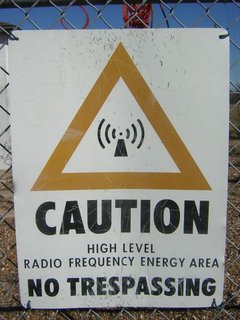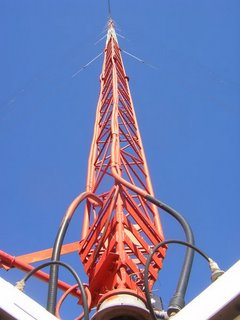 I have been sentenced to one weekend with a catheter by my doctor. Actually, I am not going to complain. He does not believe in performing procedures just before a weekend that could possible result in a call from the ER on an otherwise peaceful Saturday or Sunday.
I have been sentenced to one weekend with a catheter by my doctor. Actually, I am not going to complain. He does not believe in performing procedures just before a weekend that could possible result in a call from the ER on an otherwise peaceful Saturday or Sunday.Can’t say that I blame him.
That’s a lot like how I like to run the Radio business. Get things put to bed for the weekend, and hopefully, it all works. But there have been times…a weekend operator fails to show up…copper thieves decide to appropriate a segment of transmission cable…a satellite receiver fails. Nothing much surprises me anymore.
There are any number of variables that can for no apparent reason decide to make their unhappiness known at the most inopportune moments. I try not to dwell on that, especially when I am tethered to the homestead by a three-way piece of rubber tubing. Besides, that’s what engineers are for. To keep up with the electronics…not my tubing. Besides, our stuff doesn’t use tubes any more.
 Chris Wilkerson, our IT technician, and Jim Reese, a long time broadcast engineer friend of mine, recently met me at the KXYZ-AM transmitter site to take a look around. I had my camera along, and was snapping a few photos for the fun of it.
Chris Wilkerson, our IT technician, and Jim Reese, a long time broadcast engineer friend of mine, recently met me at the KXYZ-AM transmitter site to take a look around. I had my camera along, and was snapping a few photos for the fun of it. 
Ever wonder what ground-zero at a tower site looks like? You will either find it amazingly fascinating, or see it as just another metal stick in the sky. Perhaps these shots will alter your opinion. I’ve always been awestruck by transmitter sites and the towers they power.
Technical notes: See the two inter-locking (but not touching) rings at the base of the tower? They’re called Austin Rings, an ingenious invention allows the tower lights to illuminate at night.
 For an AM radio station to transmit, the entire length of the tower is energized. (That’s why you NEVER want to touch one of these things while they’re operating.) In order to separate the electrical circuit for the lights from the main power that’s coming off the tower, an isolation transformer (Austin Rings) is used.
For an AM radio station to transmit, the entire length of the tower is energized. (That’s why you NEVER want to touch one of these things while they’re operating.) In order to separate the electrical circuit for the lights from the main power that’s coming off the tower, an isolation transformer (Austin Rings) is used.Both rings contain helical copper windings, and when a current is passed through the lower ring, it creates a magnetic field that generates enough “juice” to energize the upper ring, which then creates current to power the tower lights.
The two metal balls mounted above and below the Austin Rings are called Johnny Balls, which prevent lighting strikes to the tower from arcing back into the transmission line and back to the transmitter. Transmitters have been knocked out by lightning strikes, but usually along a different electrical path.
Wouldn’t Nicholai Tesla have been proud?
See you on the Radio Monday morning!
1 comment:
The picture of the tower reminds me of the time you and I went up to the roof of One Shell Plaza!
Dennis Germenis
College Station
Post a Comment